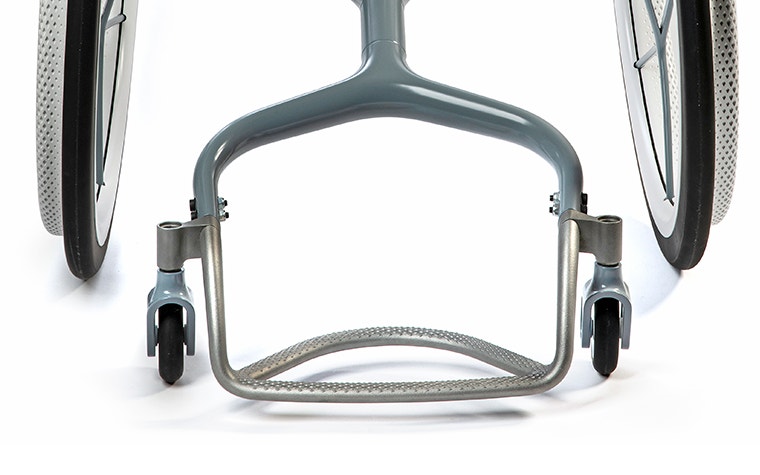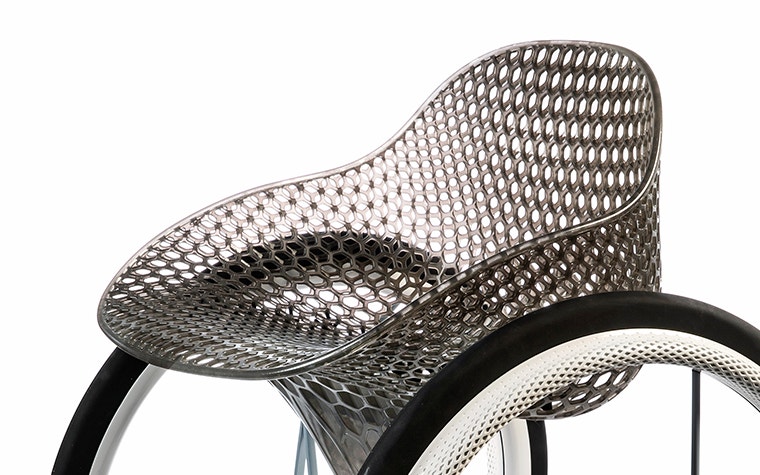사례 연구
GO Wheelchair: Creating a True-to-Life Prototype for the Concept Launch

When you are revealing your latest concept to the design world, you need a prototype that truly represents your vision and shows your design to its full potential. You need a 3D printing partner you can trust to deliver high-quality parts, each made with the right technology and material.
Benjamin Hubert of design agency Layer collaborated with Materialise to create the prototype for the GO Wheelchair, the world’s first 3D-printed consumer wheelchair.
The GO Wheelchair is the first project under Layer’s new research division, LayerLAB, a new in-house division that facilitates experimentation and research into the future of physical and digital products. The result of intensive research with wheelchair users and medical professionals conducted by Layer, the agency sought to create a more human-centered vehicle to improve the everyday lives of users.
A True-to-Life Prototype
Layer collaborated with Materialise on the GO Wheelchair and launched the concept at Clerkenwell Design Week, London, revealing a prototype that represented how the GO Wheelchair would look and function.
“We required the prototype to match our vision for the final product as closely as possible which meant we needed to work with a 3D printing partner that could advise us on the best methods for producing each part that would deliver accurate and representative results. ”
— Benjamin Hubert, Layer Design
Working in collaboration with Benjamin, Materialise Project Manager Freddie Raven assessed each of the components and used his expertise in rapid prototyping processes to develop a solution. “The functional and aesthetic requirements of each part will influence the selection of the printing technology and materials used. Different technologies offer different benefits and advantages in terms of the finished result or part performance. This means it’s essential that we work in partnership to understand the needs of each part and ensure we deliver a solution that meets the specifications.”


The Printed Parts
The 3D-printed parts of the GO Wheelchair prototype included the seat with an integrated cushioning structure and the footrest.
The intricate seat structure, which needed a smooth surface and a black transparency finish, was printed on Materialise’s proprietary Mammoth Stereolithography machine in TuskXC2700T. Stereolithography was selected due to its suitability for printing items with fine details or that require a smooth surface finish, and the mammoth machine, with a platform size of 2100mm x 680mm x 800mm, enabled the larger parts to be printed in one piece.
The foot plate was produced with Metal 3D Printing in aluminum to demonstrate how the part would behave on a production-ready model and to provide strength and durability.


The cushioning structure that sits within the seat to provide comfort and support was produced with Laser Sintering in TPU material, selected for its flexibility and strength.


“We are really pleased with the end result, it’s exciting to see our designs brought to life. The collaboration with Materialise on the technologies and materials has been invaluable and enabled us to realize a prototype together that truly reflects our vision for the GO Wheelchair.”
— Benjamin Hubert of design agency Layer collaborated with Materialise
For more on the GO Wheelchair visit the Layer website.
공유 위치:
이 사례 연구를 간단히 요약
Consumer Goods
Rapid Prototyping
3D Printing
To create a true-to-life prototype
